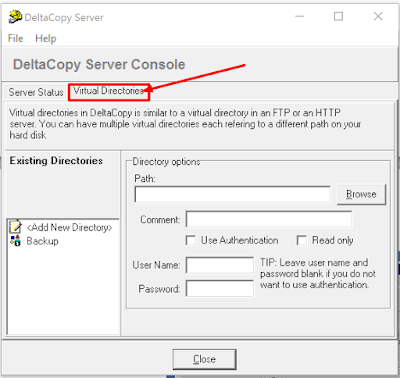Nagios 4.1.1: Adding Windows client to the Nagios server
Installing the Windows Agent:
Before you can begin monitoring Windows machines, you'll need to install an agent on Windows machines. I recommend using the NSClient++
1. Download the latest stable version of the NSClient++
2. Unzip the NSClient++ files into a new C:\NSClient++ directory
3. Open a command prompt and change to the C:\NSClient++ directory
4. Register the NSClient++ system service with the following command:
nsclient++ /install
5. Install the NSClient++
nsclient++ SysTray
6. Open the services manager and make sure the NSClientpp service is allowed to interact with the desktop (see the 'Log On' tab of the services manager). If it isn't already allowed to interact with the desktop, check the box to allow it to.
7. Edit the NSC.INI file (located in the C:\NSClient++ directory) and make the following changes:
Uncomment - Optionally require a password for clients by changing the 'password' option in the [Settings] section.
Uncomment - Make sure the 'port' option in the [NSClient] section is uncommented and set to '12489' (the default port).
8. Start the NSClient++ service with the following command:
nsclient++ /start
9. Success! The Windows server can now be added to the Nagios monitoring configuration...
Nagios 4.1.1 other links
Adding Windows Clients to the Nagios Server configutaion
Nagios.cfg:
Remember, you only need to do this for the *first* on#vi /usr/local/
Remove the leading pound (comment #) sign from the following line in the main configuration file:
#cfg_file=/usr/local/
cfg_file=/usr/local/
Now it's time to define some object definitions in your Nagios configuration files in order to monitor the new Windows machine.
Open the windows.cfg file for editing.
#vi /usr/local/
Add a new host definition for the Windows machine that you're going to monitor. If this is the *first* Windows machine you're monitoring, you can simply modify the sample host definition in windows.cfg. Change the host_name, alias, and address fields to appropriate values for the Windows box.
Sample file looks like this:
host_name winserver
}
Good. Now you can add some service definitions (to the same configuration file) in order to tell Nagios to monitor different aspects of the Windows machine. If this is the *first* Windows machine you're monitoring, you can simply modify the sample service definitions in windows.cfg.
Note Note: Replace "winserver
Add the following service definition to monitor the version of the NSClient++ addon addon
host_name winserver
service_description NSClient++ Version
check_command check_nt!
}
Add the following service definition to monitor the uptime of the Windows server.
host_name winserver
service_description Uptime
check_command check_nt!
}
Add the following service definition to monitor the CPU utilization on the Windows server and generate a CRITICAL alert if the 5-minute CPU load is 90% or more or a WARNING alert if the 5-minute load is 80% or greater.
host_name winserver
service_description CPU Load
check_command check_nt! !
}
Add the following service definition to monitor memory usage on the Windows server and generate a CRITICAL alert if memory usage is 90% or more or a WARNING alert if memory usage is 80% or greater.
host_name winserver
service_description Memory Usage
check_command check_nt!MEMUSE!-w 80 -c 90
}
Add the following service definition to monitor usage of the C:\ drive on the Windows server and generate a CRITICAL alert if disk usage is 90% or more or a WARNING alert if disk usage is 80% or greater.
host_name winserver
service_description C:\ Drive Space
check_command check_nt!USEDDISKSPACE!-l c -w 80 -c 90
}
Add the following service definition to monitor the W3SVC service state on the Windows machine and generate a CRITICAL alert if the service is stopped.
host_name winserver
service_description W3SVC
check_command check_nt!SERVICESTATE!-d SHOWALL -l W3SVC
}
Add the following service definition to monitor the Explorer.exe process on the Windows machine and generate a CRITICAL alert if the process is not running.
host_name winserver
service_description Explorer
check_command check_nt!PROCSTATE!-d SHOWALL -l Explorer.exe
}
Password Protection
If you specified a password in the NSClient++ configuration file on the Windows machine, you'll need to modify the check_nt command definition to include the password. Open the commands.cfg file for editing.#
Change the definition of the check_nt command to include the "-s <PASSWORD>" argument (where PASSWORD is the password you specified on the Windows machine) like this:
command_name check_nt
command_line $USER1$/check_nt -H $HOSTADDRESS$ -p 12489 -s PASSWORD -v $ARG1$ $ARG2$
}
Finally, verify Nagios Configuration files for any errors.
#/usr/local/
# service
Now go to Nagios Monitoring Web interface at “http: nagios : nagios
Keywords: Nagios, Monitoring, Linux host, Ading Linux host, Adding Client, Adding Windows Client




Comments
Post a Comment